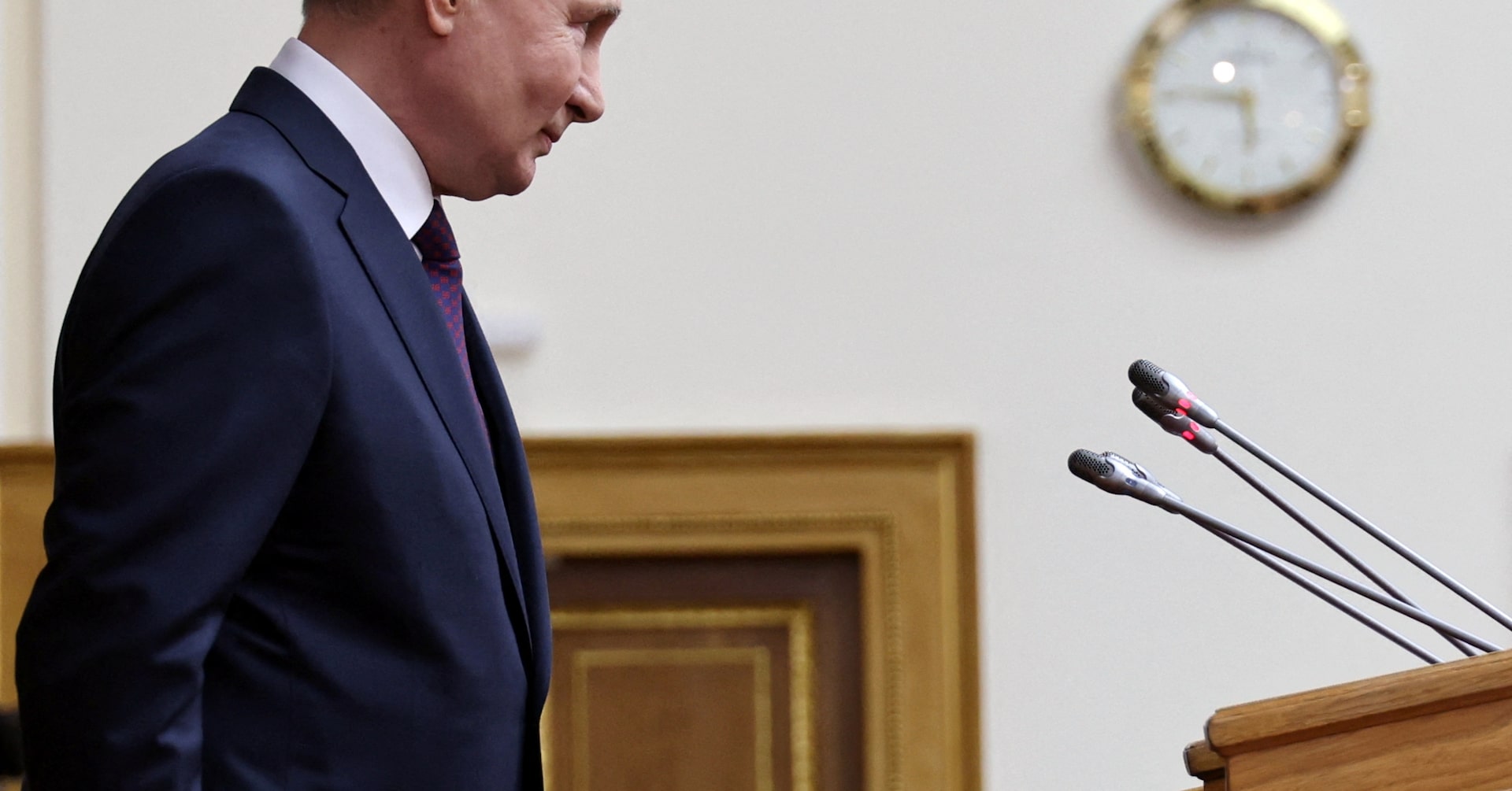Russia's Threat And The Subsequent Surge In Global Military Spending

Table of Contents
Russia's Actions as a Catalyst for Increased Military Spending
Russia's assertive foreign policy and military actions have become a primary catalyst for the significant rise in global military expenditure. The perceived threat emanating from Russia's actions is driving nations to reassess their defense postures and significantly increase their budgets.
The Ukraine Conflict as a Primary Driver:
The 2022 invasion of Ukraine served as a stark demonstration of Russian aggression, shattering previous assumptions about European security and drastically altering the global security landscape. This unprovoked act of war prompted a swift and significant response from NATO countries and other global partners.
- Increased military aid to Ukraine: The West responded with unprecedented levels of military aid to Ukraine, providing weapons, training, and financial support to help defend against the Russian invasion. This demonstrates a collective response to perceived Russian aggression and sets a precedent for future responses to similar conflicts.
- The demonstration effect: The conflict in Ukraine has had a "demonstration effect," prompting other nations to reassess their own defense capabilities and increase their military spending. Countries witnessing the scale and intensity of the conflict are incentivized to bolster their own defenses against potential future aggression.
- Bullet points:
- Increased defense budgets in Eastern European countries like Poland, Romania, and the Baltic states.
- Heightened NATO activity, including increased military exercises and deployments in Eastern Europe.
- Acceleration of weapons procurement programs across many NATO and non-NATO nations.
Russia's Assertive Foreign Policy and its Impact:
Russia's military interventions in other regions, such as Syria, and its ongoing involvement in proxy conflicts, have further fueled global insecurity and contributed to the perception of Russia as a significant threat. These actions underscore a broader pattern of assertive foreign policy that is destabilizing international relations.
- Impact of Russian cyber warfare and disinformation campaigns: Russia's use of cyber warfare and disinformation campaigns to undermine democratic processes and spread instability globally has eroded trust in international institutions and heightened concerns about national security. This necessitates increased investments in cybersecurity and intelligence gathering capabilities.
- Contributing to a perception of threat: The cumulative effect of Russia's actions—military interventions, cyber warfare, and disinformation campaigns—has created a palpable sense of threat, prompting many nations to increase their defense spending as a precautionary measure.
- Bullet points:
- Renewed focus on cybersecurity infrastructure and defensive measures.
- Significant investments in intelligence gathering and analysis capabilities.
- Bolstering of national defense strategies to counter hybrid warfare tactics.
Global Responses: A Surge in Military Expenditure
The perceived threat from Russia has prompted a dramatic increase in military spending across the globe, affecting both NATO and non-NATO countries.
Increased Defense Budgets in NATO Countries:
NATO member states have significantly increased their defense budgets in response to Russia's actions. This reflects a collective acknowledgment of the growing threat and a commitment to collective defense.
- Significant increase in defense spending: Many NATO countries have committed to increasing defense spending to meet the 2% GDP target set by the alliance.
- Specific increases in various countries: Germany, the UK, and Poland are among the countries that have seen particularly substantial increases in their defense budgets. These increases often include investments in new weaponry and personnel.
- Rationale behind the increases: The rationale for these increases centers on the perceived threat from Russia, the need to deter potential aggression, and the imperative to modernize and strengthen military capabilities.
- Bullet points:
- Specific examples of increased military spending per country (with quantifiable data where available).
- Acquisition of new weapons systems, including advanced fighter jets, missile defense systems, and cyber warfare capabilities.
- Strengthening of military alliances through increased joint exercises and intelligence sharing.
Rise in Military Spending Beyond NATO:
The surge in military spending is not limited to NATO countries. Many non-NATO countries, particularly those in Asia and the Pacific, are also increasing their defense budgets.
- Increase in military spending in non-NATO countries: Several countries in Asia and the Pacific, concerned about regional rivalries and perceived threats, are significantly increasing their defense budgets.
- Reasons for the increase: These increases are driven by a range of factors, including regional rivalries, territorial disputes, and concerns about the potential for great power competition.
- Implications for international stability: This global trend of increased military spending raises concerns about the potential for increased regional instability and the possibility of an arms race.
- Bullet points:
- Examples of increased military spending in non-NATO countries (e.g., Japan, South Korea, Australia).
- Analysis of regional arms races and their potential destabilizing effects.
- Discussion of the potential for increased tensions and conflict in various regions.
Economic and Societal Consequences of Increased Military Spending
The global surge in military spending carries significant economic and societal consequences that demand careful consideration.
Economic Impacts:
The significant redirection of resources towards defense has considerable economic implications.
- Opportunity costs: Increased military spending represents an opportunity cost, diverting resources away from investments in healthcare, education, and infrastructure. This can have long-term negative consequences for societal well-being and economic development.
- Impact on economic growth and national debt: The substantial increase in military expenditure can strain national budgets, potentially leading to increased national debt and reduced economic growth.
- Implications for global economic stability: The collective impact of increased military spending across the globe could negatively affect global economic stability, particularly if it leads to increased trade tensions or reduced investment in other crucial sectors.
- Bullet points:
- Statistics on military spending as a percentage of GDP for various countries.
- Potential for inflationary pressures due to increased demand for military goods and services.
- Reduced investment in social programs and infrastructure projects.
Societal Impacts:
The increased focus on military spending also has potential societal impacts.
- Impact on public perception: Public opinion on military spending can be significantly impacted by the perceived threat and the government's justification for these expenditures.
- Effect on social cohesion and civil liberties: In some instances, increased military spending might lead to a decline in social cohesion and potentially affect civil liberties.
- Potential for increased militarization of society: A heightened emphasis on military preparedness can lead to a more militarized society, impacting cultural values and political discourse.
- Bullet points:
- Public opinion polls on military spending and public support for defense increases.
- Potential erosion of trust in government due to transparency issues surrounding military budgets.
- Rise in nationalistic sentiments and potential for increased social division.
Conclusion:
Russia's aggressive actions have undeniably fueled a significant surge in global military spending. This increase, driven by the perceived threat from Russia and a reassessment of global security, carries profound economic and societal consequences. Understanding the complexities of this phenomenon is crucial for navigating the challenges of international relations in the years to come. We must continue to monitor Russia's actions and their global impact, analyzing the implications of this unprecedented increase in global military spending to ensure a more stable and secure future. Further research into the long-term effects of this surge in military spending is essential to inform effective policy decisions concerning Russia's threat and the subsequent global military buildup. A comprehensive understanding of the dynamics surrounding Russia's threat and global military spending is paramount for informed decision-making and the creation of a more secure international environment.

Featured Posts
-
 Kaba Shooting Jury Delivers Not Guilty Verdict For Police Officer
Apr 30, 2025
Kaba Shooting Jury Delivers Not Guilty Verdict For Police Officer
Apr 30, 2025 -
 Churchill Downs Weather Contingency Plans Kentucky Derby 2024 Storm Preparedness
Apr 30, 2025
Churchill Downs Weather Contingency Plans Kentucky Derby 2024 Storm Preparedness
Apr 30, 2025 -
 Nba Playoffs Game 2 Cavaliers Vs Heat Live Stream And Tv Schedule
Apr 30, 2025
Nba Playoffs Game 2 Cavaliers Vs Heat Live Stream And Tv Schedule
Apr 30, 2025 -
 Bayern Munich President Rules Out Far Right Af D Politician On Club Board
Apr 30, 2025
Bayern Munich President Rules Out Far Right Af D Politician On Club Board
Apr 30, 2025 -
 Ru Pauls Drag Race Season 17 Episode 9 Free Online Viewing
Apr 30, 2025
Ru Pauls Drag Race Season 17 Episode 9 Free Online Viewing
Apr 30, 2025
